Effect of mycotoxins on exocrine pancreatic function
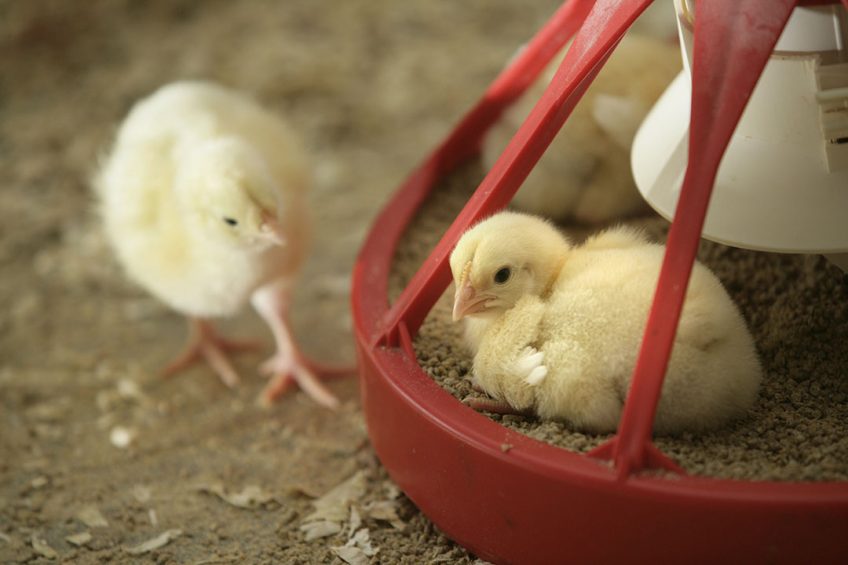
Aflatoxins and diacetoxyscirpenol can find their way into the feed of broiler chickens, which could be particularly harmful in starter diets. In this study, the individual and combined effects of exposure to these mycotoxins on exocrine pancreatic function and body weight were examined.
Both aflatoxins and trichothecene diacetoxyscirpenol (DAS) (4,15-diacetoxy-3-hydroxy-12,13-epoxy-trichothec-9-ene), are 2 important groups of mycotoxins that cause mycotoxicosis in zootechnical animals, and in broiler chickens in particular. The broiler industry has been established on the basis of cutting-edge technologies in genetics, specific nutrition, feeding systems, management, biosafety and health. It is worth highlighting that chicken meat constitutes a very important protein source, accessible and of high quality for human consumption.
Additivity, synergism and antagonism
Both aflatoxins and DAS are present in nature as natural contaminants constituting potential risk factors that affect the organic systems of broilers through clinical scenarios of subacute, acute and chronic intoxication. It has been scientifically documented that high concentrations of aflatoxins and DAS, fed separately to broilers, cause acute mycotoxicosis which results in high mortality and a significant deterioration in feed consumption, weight gain, feed conversion ratio and broiler performance, explained by the organic disorders produced. On the other hand, the study of the effects of the mycotoxins combined action constitutes an area poorly covered, although in the real-world fungi and mycotoxins are contaminating grains and feedstuffs in the form of combinations, associations or mixtures. In this respect, the expected effects due to the presence of 2 or more mycotoxins can occur under the principles of interaction known as additivity, synergism and antagonism. An innovative research studied the exocrine pancreatic function in broilers exposed to aflatoxins and DAS individually and combined.
Study
For the study, aflatoxins were produced by growing Aspergillus parasiticus NRRL 2999 and the concentration of total aflatoxins were determined by high pressure liquid chromatography. DAS was produced by growing Fusarium sambucinum NRRL 13495, purified and recrystallized from ethyl acetate up to a melting point of >162ºC was reached and a single spot, co-chromatographed with an authentic standard of DAS.
Experimental set-up
In the study 224 day-old male broiler Cobb x Cobb chicks were weighed, identified and housed in electrically battery heated continuous lighting. Feed and water were available ad libitum during the total experimental period. A completely randomised 2 x 2 factorial experimental design consisting of four treatments (0, 2.5 mg of aflatoxins/kg of feed, 3.0 mg of DAS/Kg of feed, and the combination 2.5-3.0 mg of aflatoxins and DAS respectively/kg of feed) were used in this experiment. Each treatment was replicated in 7 pens and these were considered as the experimental units. Broiler chicks were maintained on treatments from 1 to 21 days of age at which time the experiment ended. Broiler chicks were weighed individually at 1, 6, 12 and 18 days of age. Body weight (BW) and body weight gain (BWG) were determined and calculated respectively at weekly intervals.
Exocrine pancreatic function
To determine the exocrine pancreatic function assessment, at the end of the experiment the pancreata were removed, individually weighed, corrected by BW and the results were expressed in g/100 g BW. Pancreata were frozen (-20ºC) until pancreas homogenates were performed to determine dry matter, and α-amylase, lipase, trypsin, and chymotrypsin activity. These tests were run by duplicate and the average result was used in statistical analysis. The results were expressed as the total activity of α-amylase (Δ O.D./minute/g pancreas), lipase (mL of titration solution/g pancreas), trypsin, and chymotrypsin (D.O./g pancreas). Means for each variable were subjected to ANOVA as a 2 x 2 factorial arrangement of treatments using the SAS software General Model procedure. If it were significant (P<0.05), the protected fisher’s least significant difference was calculated and used as the threshold to detect significant differences.
Effect on body weight
Broiler chickens that received aflatoxins individually and combined with DAS showed a significant negative impact on BW and BWG. Broilers that received the DAS-contaminated diet, resulted in a significant lower BW than the control group, but significantly higher than those which consumed the aflatoxins contaminated diet individually or combined with DAS.
Pancreas weight
Broiler chickens exposed to consumption of diets contaminated with aflatoxins individually (2.5 mg/kg of feed) or combined with DAS (2.5 + 3.0 mg of aflatoxins and DAS respectively/kg of feed) showed a significant increase of the pancreas weight compared to those of the control group. Broilers that consumed the diet contaminated only with DAS showed an intermediate pancreas weight which was similar to those of the control group and to those exposed to individual aflatoxin consumption. Individual and combined aflatoxins and DAS, showed no differences in the dry matter of the pancreas homogenates (Figure 1).

The results on activity of pancreatic enzymes in broilers fed with aflatoxins and DAS are shown in Table 2. Broilers exposed to individual consumption of aflatoxins and combined with DAS showed a total α-amylase activity that was similar between both treatment groups and with the control group. The α-amylase activity of broilers exposed to individual DAS was similar to those of the control group, but significantly lower in broilers that received a contaminated diet with aflatoxins individually or in combination with DAS. The total lipase activity exhibited by broilers that received the DAS-contaminated diet was similar to those of the control diet.
Similar chymotrypsin activity
Consumption of diets containing individual aflatoxins or combined with DAS caused a significant increase in total lipase activity compared with those of the control group and with DAS alone. The total trypsin activity in broilers that consumed either of the two mycotoxins individually or combined, was similar to those shown by the control group. Total chymotrypsin activity significantly decreased in broilers that consumed a diet contaminated with DAS alone in relation to the control group and the combination group. Broiler chickens that received any of the diets containing aflatoxins, showed a chymotrypsin activity similar to the control group.
Effect on pancreas exocrine function
Regarding the size of the pancreas, the results were consistent with an individual effect of aflatoxins that was shown by the significant increase in the weight of this organ. The increase in pancreas size suggests an adverse effect on nutrient digestion, which could partly explain the reduction in BW and BWG caused by aflatoxins in this study. On the other hand, the presence of DAS caused a slight increase in the pancreas weight without showing significant differences when compared with the control group and by those which received 2.5 mg of aflatoxin/kg of feed. These results partially support the findings of other studies where no effect on pancreas weight was found in broilers fed with a diet contaminated with 5.0 mg/kg of DAS during the first 3 weeks of life. Due to the fact that very few studies have been conducted with DAS, the discussion on this subject is so limited.
α-amylase activity
The results on exocrine function of the pancreas showed a different effect of aflatoxins and DAS on digestion parameters. Thus, α-amylase activity was reduced in broilers consuming a diet contaminated with DAS alone, while it was increased in diets where aflatoxins were present individually or combined with DAS. Although the activity of this enzyme in broilers that received both mycotoxins individually was not significantly different from those exhibited by the control group, it is interesting to highlight that its activity was numerically decreased, and increased by the individual presence of DAS and aflatoxins respectively, with a significant higher activity when both mycotoxins were combined.
Negative effect on diet fat digestion
In relation to lipase activity, broilers consuming a diet contaminated with DAS alone exhibited a similar response than those of the control group. Unlikely, groups consuming a diet contaminated with individual aflatoxins or combined with DAS, showed a significant increase in lipase activity. This important finding suggests that aflatoxins in broilers could cause a negative effect on diet fat digestion, which would partly explain the decrease in BW and BWG found in this study. In addition, the pancreatic lipase activity increase caused by the presence of aflatoxins in this study, could be interpreted as a compensatory physiological mechanism to counteract the aflatoxins action.
Damage to the pancreas and consequently the exocrine pancreatic function impairment, could be expected if broilers remain exposed in the growing period to the individual or combined action of aflatoxins and DAS
Room for further investigation
The results of the proteolytic enzymes activity suggest that protein pancreatic digestion seem to not be affected by the presence of individual aflatoxins or combined with DAS. On the contrary, individual DAS caused an effect linked to a chymotrypsin activity reduction. These results should be interpreted within the context of a response that would only involve the broilers’ start period and the effects on exocrine pancreatic function in the growing period should be explored as an innovative research area. In relation to this, it is thought that damage to the pancreas and consequently the exocrine pancreatic function impairment, could be expected if broilers remain exposed in the growing period to the individual or combined action of aflatoxins and DAS. Finally, it is important to highlight that in all cases, the factors related to age, feed mycotoxin concentration, individual or simultaneous presence of mycotoxins, exposure time to mycotoxins, and broiler individual variability, would determine the response level exhibited by broiler chickens.
For more information, the author can be contacted at: dr.marelen.jaramillo@gmail.com
 Beheer
Beheer

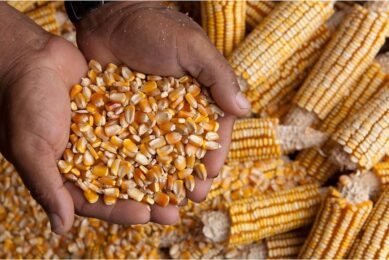
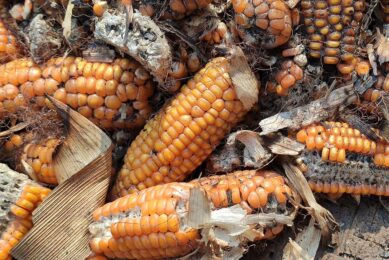
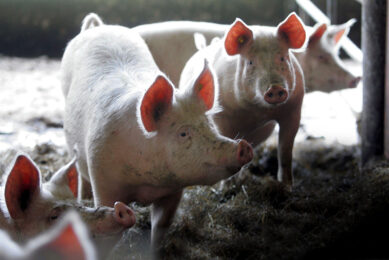
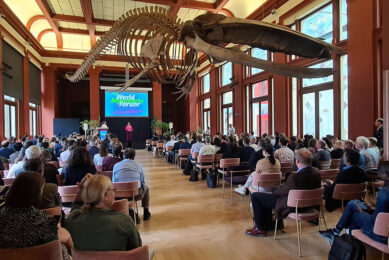
 WP Admin
WP Admin  Bewerk bericht
Bewerk bericht